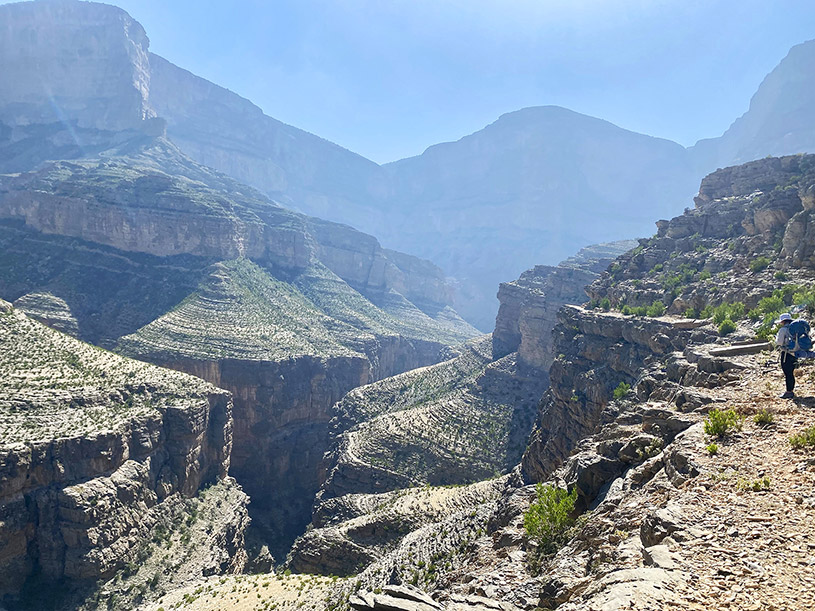
Chloe Boxall won a Next Challenge grant in 2022, to support her plan to fast-pack across the Western Hajar mountains in Oman. Having lived in Oman and explored these mountains, we were instantly captivated by this idea (not to mention hugely envious). Chloe was joined in this adventure by Alice Hudson and reports back on her travels.
The Next Challenge Grant is a crowd-funded adventure grant which has supported over 70 adventures since it was founded in 2015. Applications for 2023 are now closed, but you can read about past winners and donate here.
Yomping the Hajar:
A slow fastpack through the mountains of Oman
by Chloe Boxall
Thick heat enveloped us as we set out through the village of Al Afyah which marked the start of our route; a traverse of the Western Al Hajar Mountains of Oman. I was finally embarking on an adventure which had been waiting in the wings since the start of lockdown.
I was due to hit the half century in less than a year and was keen to meet that landmark having completed my first expedition. I was being joined by soon-to-be-dubbed ‘Eagle-Eye’ Alice (on account of her excellent trail spotting abilities), who responded to my last-minute plea for a partner on the Explorers Connect website. Despite us only briefly meeting a couple of times before we left, Alice turned out to be the perfect teammate, having a calm and stoic attitude, and enough mountain experience combined with determination, that we both felt a good measure of confidence in our little team.
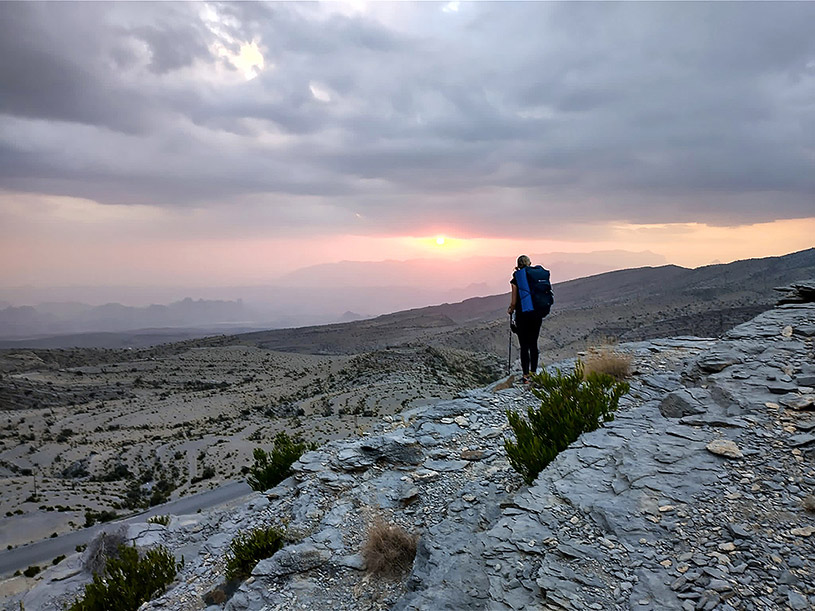
From the outset these mountains introduced themselves in no uncertain terms. Our first day’s progress was slow over unrelentingly technical and steep terrain. We clambered on upwards, finally reaching a saddle way above the village of Hadash, our endpoint for the day, as the sun was dropping towards the horizon. Down to our last sips of water, we began a cliff descent. Day gave way to night, and we continued cautiously down the improbable rock face in darkness, our head torches searching out trail markers through the gloom. After almost 13 hours on the trail we arrived at a public washroom at the edge of the village, where we slaked dry throats, before retreating up a gravelly bank to lay out mats and collapse thankfully into sleep. The preciousness of water in these sun-baked mountains was immediately apparent and a focal point from then onwards.
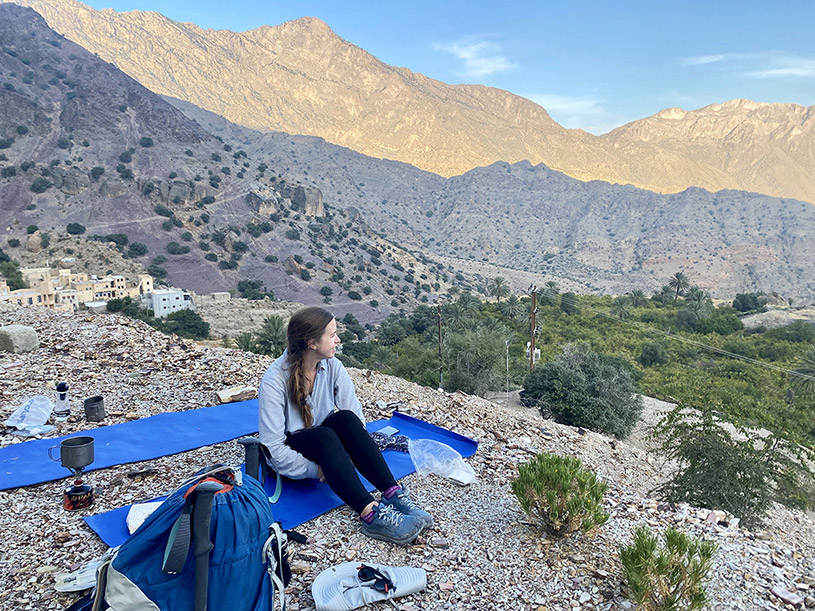
The next few days continued in much the same vein; dawn starts and long, hot days, multiple wadi crossings and phantom unmarked paths. GPS navigation was sketchy at times, but we began to pick up on a few almost imperceptible trail signs; a polished rock or purposely cut bush, a trail of donkey poo or occasionally what we dubbed ‘reassuring rubbish’ – a tin can. There were few opportunities to do anything fast, the planned fastpack quickly became a very slow-pack. Feet clad in tough trail running shoes were taking a battering on the sharp rock. Clothes and backpacks were being steadily shredded by thorny plants. Some days the trail was well marked for a few hours, providing the opportunity to relax and enjoy the breath-taking vistas which unfolded over rocky crests, the tiny delicate flowers protected by their spikily possessive leaves, and feral donkeys who huffed in suspicion at our approach. As we neared settlements, the call to prayer would echo up into the mountains, signalling civilisation. We broke for water refills at tanks and springs, and at dusk slid with tired relief into our sleeping bags, enjoying being still and gazing in awe at the night sky, peppered with a billion brilliant stars.
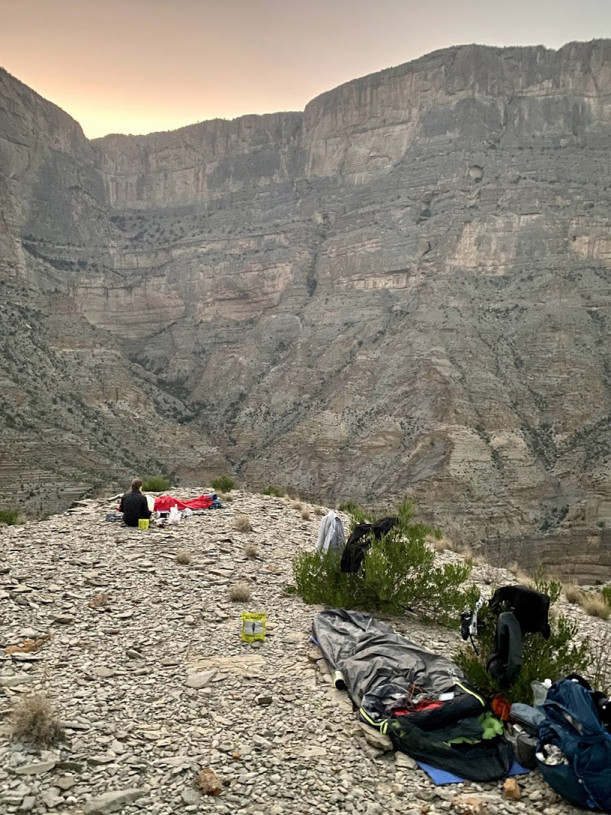
As the sun lowered on day three, The Suwgra appeared like a mirage in the desert – fully restored village homes transformed into beautiful guest accommodation, clinging to an imposing, rough-hewn rock face. We were warmly welcomed by Mohammed, whose family has lived here for generations, and treated to sweet, sticky dates and fragrant Omani coffee.
Setting out next morning after a comfortable night at The Suwgra, I managed to completely miss an important turning off the track. We merrily continued on our way for a good forty minutes, following an easy, marked path, before I checked the GPS and realised we should have left it sometime earlier. Feeling bad for such a rookie error, with time and energy wasted so early in the day, I retraced our steps. We were already on the back foot, on a day that promised to be long and hot.
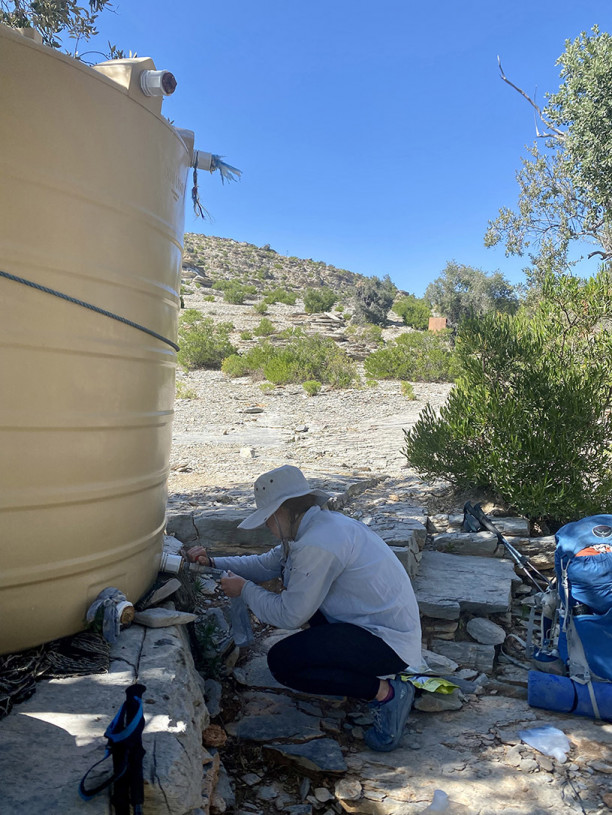
We were due to arrive in Ar Rus that evening and meet with a local guide who had come highly recommended by a contact. Salaam Al Shariqi had kindly agreed to show us where we could sleep in Ar Rus and share a bit about the history and geography of the area. However, as the sun began to drop on our endeavours yet again, we feared our late arrival would put paid to all plans. After messing about for a while at the top of a cliff in the dark, where the GPS seemed to want us to take a dive over the edge, we re-found the track and continued, still a considerable way from our goal. In the distance we heard a call and saw a head torch bobbing towards us. Salaam had thoughtfully tracked an hour up the mountain to look for us in the darkness, and he quickly guided us down to Ar Rus, taking us to the Majlis where we could stay.
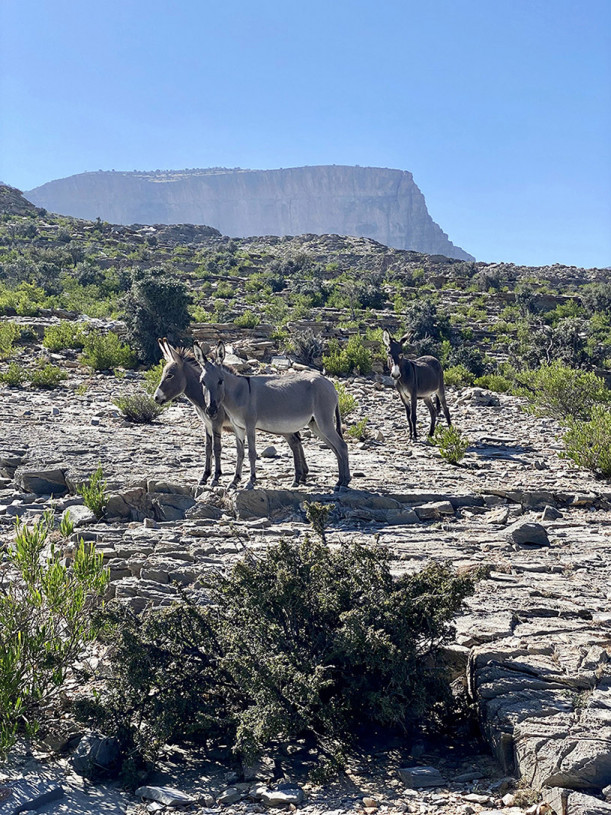
Before leaving us to sleep, Salaam generously loading us with fruit and biscuits before he left, and we set up camp outside the main room, where another tired hiker was already ensconced. We spoke with him the next morning – after four days on the trail alone he had decided to call it a day. The trail is not an ideal solo undertaking.
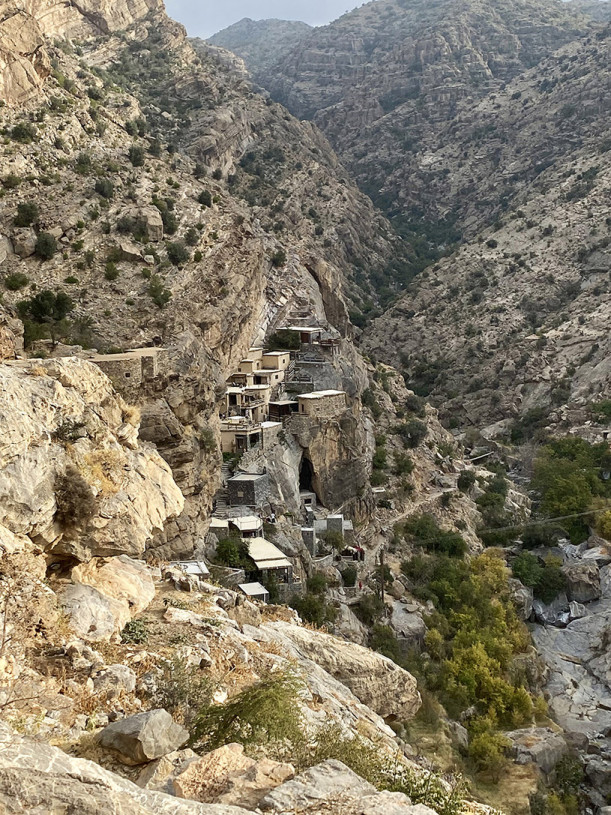
The next few days led us on towards Jebel Shams, the highest peak in the country at just over 3000m. We were tired and finding the going mentally and physically tough. Finding a signal and speaking with home made me feel homesick. I missed my kids, imagining the day-to-day stuff we’d be doing if I was there – how much I would appreciate those simple, mundane moments now. Then I reminded myself that once back home I would undoubtedly yearn once more for adventure and challenge – the fickle human condition. We spent a night at Al Barbad hut, refilling with reservoir water – our green ‘super smoothies’, and enjoying an evening with a campfire, elevating our spirits along with our blistered and throbbing feet in the fire’s warmth.
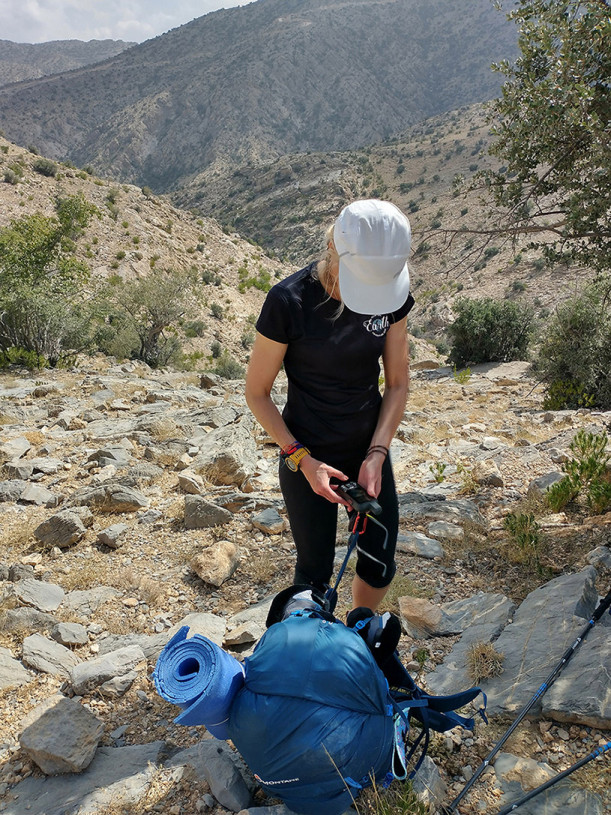
After a late start due to my notorious kit faffing, we struggled with navigational challenges and tired legs on the rugged terrain, until thankfully joining a green dot-marked Ultra-Marathon trail. Finally the first chain ladder came into view, a Via Ferrata style climb up a short section with an intimidating drop at our backs. Heavy packs and the wide spacing of the rungs made it hard work, and the steep, gravelly ground on which it ended added to the test.
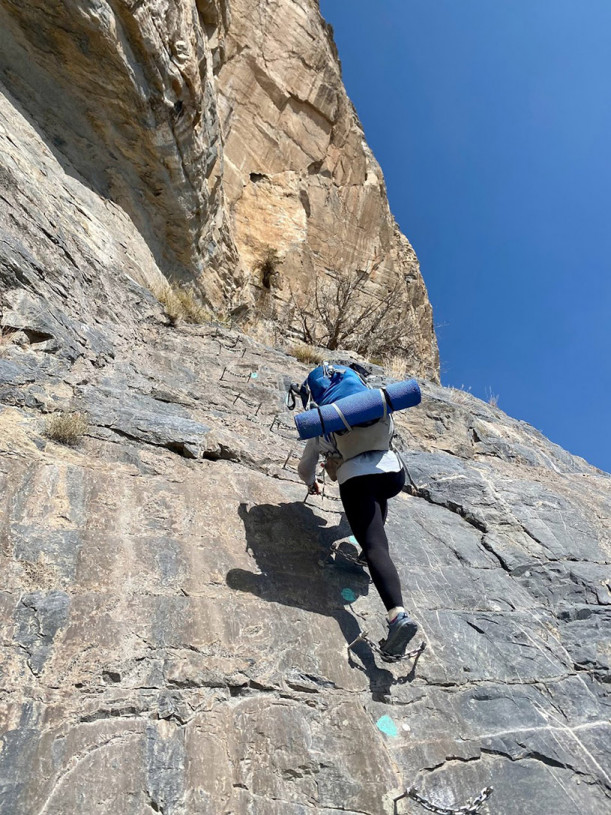
A second ladder further along proved easier, and finally we reached a sloping area not far from the summit, where we made camp under an ancient, gnarled Juniper tree. The night was chilly but our tree felt like a magical protector, its low branches making a roof overhead, stars twinkling in between. Sleeping deeply, with more of the strange dreams I’d experienced since arriving in that evocative landscape, I woke next day feeling amazingly revived by the night’s forest bathe.
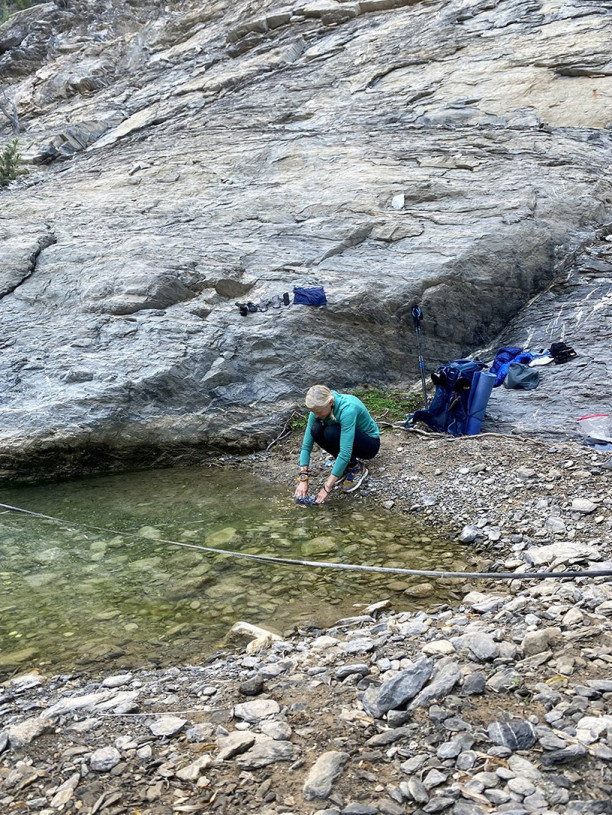
The final section of the route was a real wilderness with no settlements or roads along the way, only a handful of infrequently inhabited ‘diyar’- the campsites of the semi-nomadic pastoralists known as Shawawiya. The route from here was unmarked, threading into the fingers of a huge canyon. Our trainers were losing their grip, and the GPS went bananas as the sky narrowed above steep rock walls. The terrain continued to be challenging, and several times we completely lost the trail, having to resort to recces and sketchy scrambles up and down the steep, loose rock to get back on track, losing valuable hours of daylight. Mornings started early at 4.30am, setting out at sunrise and going until the daylight got short and we needed to make camp. The days were punctuated by little rewards; a shady, birdsong-filled nirvana in the depths of a wadi, a small flock of swallow-like birds startled from their vertiginous roosts, curious donkeys who trailed us in hope of food, and glorious red-gold Hajar sunsets. And there were moments of beautiful stillness when I became intensely aware of the deep silence cloaking this vast and ancient landscape.
At lunchtime on the penultimate day we arrived at a diyar, dropping bags under a shady tree to prepare lunch. A small group of Omanis, several generations of the same family, arrived from a shooting trip, and having greeted us enthusiastically, invited us to join them for lunch. We sat together in their compound, communicating mostly with sign language and smiles, while they generously prepared a delicious rice dish with more coffee and dates. These people are intrinsically connected to this landscape, and travel across it with loping ease and minimal baggage. A huge, stately and strong-smelling billy goat observed our ascent from a Lion King-esque boulder above, before setting off ahead to lead us along the correct cliff path. A spirit guide, showing the way.
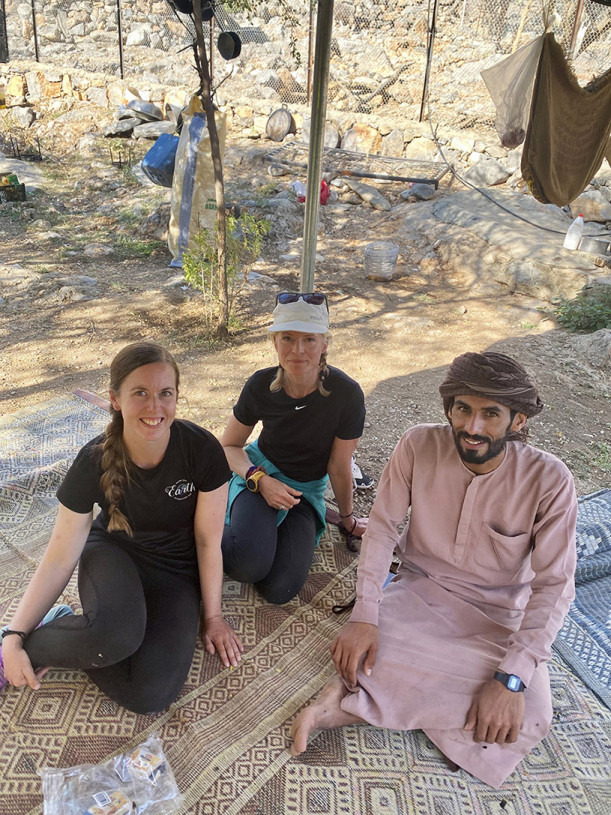
The last day was a long but mostly gentle descent, and it began to sink in – we were almost there. The heat rose as the altitude reduced, until eventually we arrived tired and dusty in the village of Al Jammah, where a celebration of some sort was underway. Immaculately turned out Omanis shouted friendly greetings from their cars as we walked our scruffy and unsavoury selves along the road to the town of Yiqa. It occurred to us that Yiqa would have shops, and the thought of chilled fizzy drinks kicked off a discussion about which particular brand of sickly fizz we’d most relish. Reaching a main road we spotted an establishment; the promisingly named ‘Al Moheet Cold Store’. Leaving filthy backpacks outside – quite safe to do in Oman – we bundled in, and there, like the holy grail, found a chilled cabinet of drinks. A fantasy ending. The next half hour was spent sat on the dusty kerbside delighting in sweet, chilled sensations, while the very kind store owner found a taxi to take us back to Muscat. We were done.
As far as we know, we were the first all-female team to complete the traverse, although apart from a couple of little jogs we failed to run it, our original aim being to fastpack the route. As a relative novice to fastpacking, the terrain was just too technical, and the weight of water and food too high. We did however raise over £4000 for the Now on Earth Youth Adventure Grant, for which I am so grateful to so many people. In particular to The Next Challenge who provided us with the grant which enabled it all to happen.
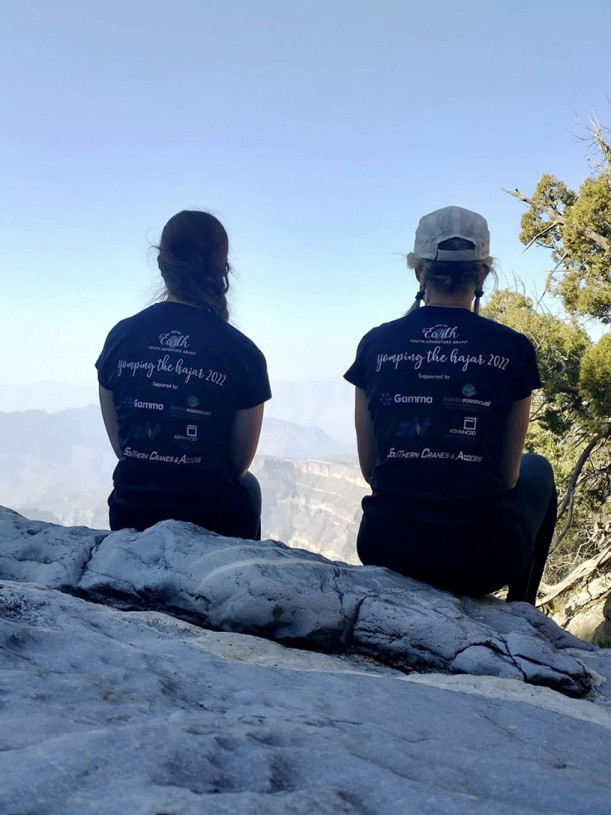
What do you think? Please do add your thoughts below…